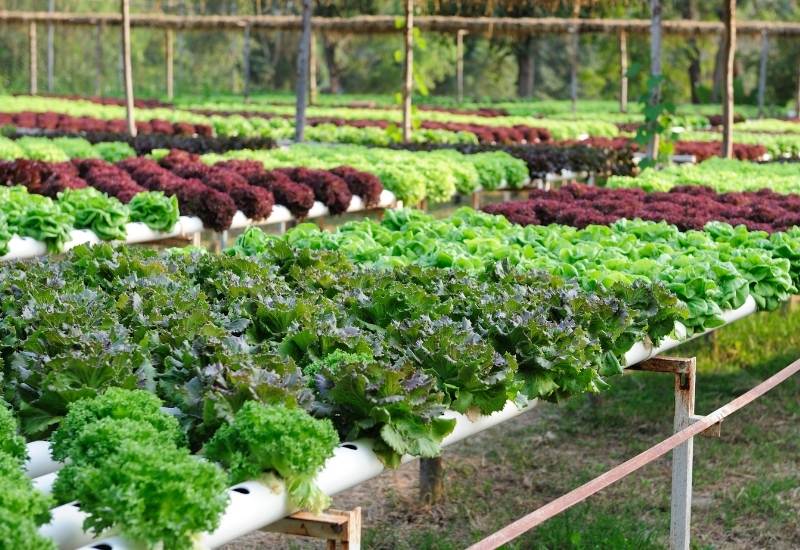
“Which plants, vegetables, herbs and fruit, can you grow with hydroponics?” Well, “Almost all,” could be the answer. Apart from massive trees like redwood and oak, we can now grow many species hydroponically.
But not all are as easy to grow successfully as others. Some, in fact, are far more indicated to less experienced gardeners than others.
Plants that are easy to grow hydroponically include many annual and fast crops like tomatoes and lettuce, but also some perennials. And these are not only vegetables, but herbs and fruits too. There are many reasons why they are suitable, including size, shape and growing preferences.
Picking the best plants and crops for your hydroponic garden can be hard. Especially if you are not an expert, you will need “tried and tested” plants that give you a high chance of success.
And this article will show you the best ones ever, in all three groups (vegetables, herbs and fruits) with tips on how to grow them hydroponically.
20 Best Plants for Your Hydroponic Garden
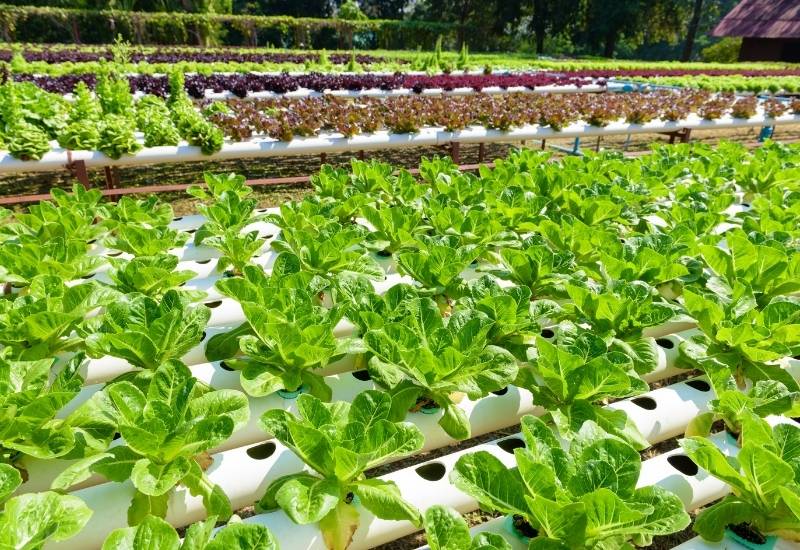
Whether you want to grow vegetables like peppers or tomatoes, herbs like basil or mint or even fruit plants, like strawberries and pineapples, there are quite a few plants for your garden. Here are the very, very best!
Best vegetables for hydroponics
Best herbs for hydroponics
Best fruit plants for hydroponics
All these will grow in hydroponically, but there are many hydroponic systems. So, first let’s look at how we can match the plant to the right system.
Plant Type and Hydroponic System
Is there a link between which type of plant you want to grow and which system you should use? Yes there is. Some systems are better for small annual crops, others for large perennial plants for example.
So, a lot will depend on the type of hydroponic system you have or have in mind. For example, it has been difficult to grow trees hydroponically till recently. They need very good aeration to the roots, which are large and difficult to oxygenate.
But there is more; imagine a tree in an ebb and flow system… Can you see how difficult it would be to grow it in a small pipe?
And how about pushing all that water through the large and thick roots? Would not that be a problem? How about cleaning the pipes? It’s hard to do when you have no change of crops.
You already see that the ebb and flow system is basically only suitable to small and annual crops.
So, for a start a tree will require the Dutch bucket method, which is a development of the drip system where you irrigate the roots in a growing medium which is contained in a dark and closed bucket, a bit like a pot.
On the other hand, there are crops that adapt to many different hydroponic systems. For example, short lived leafy vegetables like chard, spinach, cress etc. can grow in most hydroponic systems. They need no big tank for the roots, you can clean the grow tank at any cop change etc.
This gives you an idea of how “hydroponics” is a general term, with many systems in it. And each system has its pluses and minuses. But we will see for each crop which systems it can grow in or it is best for.
And now you have the general concept in mind, I need to tell you how to read the guidelines, or tips, in the article.
How to Read the Hydroponic Guidelines (Tips) in this Article
I will give you some key guidelines for each type of plant:
Now you know how to read the “tips” we can look at all the plants in out three groups, starting with the most common one.
Best Vegetables for Hydroponics
When we say, “Hydroponics,” people imagine vegetable plants like lettuce and tomatoes. That’s for many reasons, and one is that in fact hydroponics did start with vegetables and only later spread to other crops.
Indeed the very first hydroponic plant in the modern world was a tomato! And indeed they often adapt to many different hydroponic systems.
Sweet potatoes, for example are famously grown in the simplest system of all, the Kratky method or simply a jar with water. Similarly, a lot of the lettuce we eat nowadays is grown hydroponically.
Of all the vegetables you can grow hydroponically, here are the safest, the easiest, the most “tried and tested” ones – in short the best vegetables for hydroponics.
1: Tomatoes
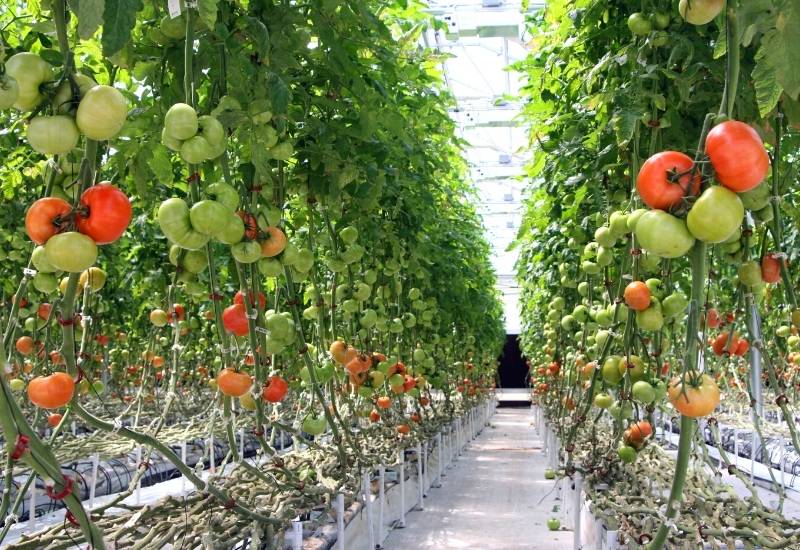
I wanted to start with a classic. Tomatoes are the most “historical” hydroponic plants ever. There are many different varieties of tomatoes, but vining ones may be more suitable.
Having said this, you can grow a wide range of tomatoes, red, green yellow or black, plum tomatoes, beefsteak tomatoes, cherry tomatoes… all are suitable.
Hydroponics actually perfect for tomatoes, because they like very steady conditions which you can give them with hydroponics. In fact, they like lots of water and nutrients, constant light etc.
But be careful tomatoes grow much bigger with hydroponics than in soil! They can grow twice as tall as soil tomatoes.
Yes, that means that they will give you much bigger yields than soil tomatoes. But it also means that you need to give them long and strong support from stakes!
2: Lettuce
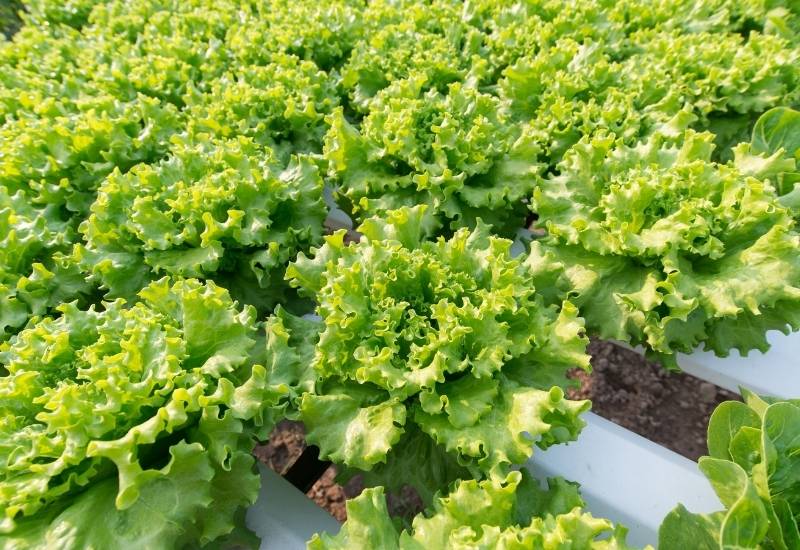
Lettuce is another common vegetable you can grow hydroponically Another classic in fact. It is adaptable to most hydroponic systems because it has limited root development.
It is also an excellent starting vegetable if you are new to hydroponics because it has a short life span.
Basically, you can harvest your lettuce in less than two months, which means that if it goes wrong, you can replace it quickly.
It also means that you can experiment with other types of plants, and experience is as important in hydroponics as it is in conventional gardening.
There are so many varieties of lettuce to choose from; maybe a big, compact or semi-compact variety like round (butterhead) lettuce, batavia lettuce, leaf lettuce, romaine lettuce or even radicchio would be more easily manageable than, for example, lambs lettuce and similar varieties.
3: Bell Peppers
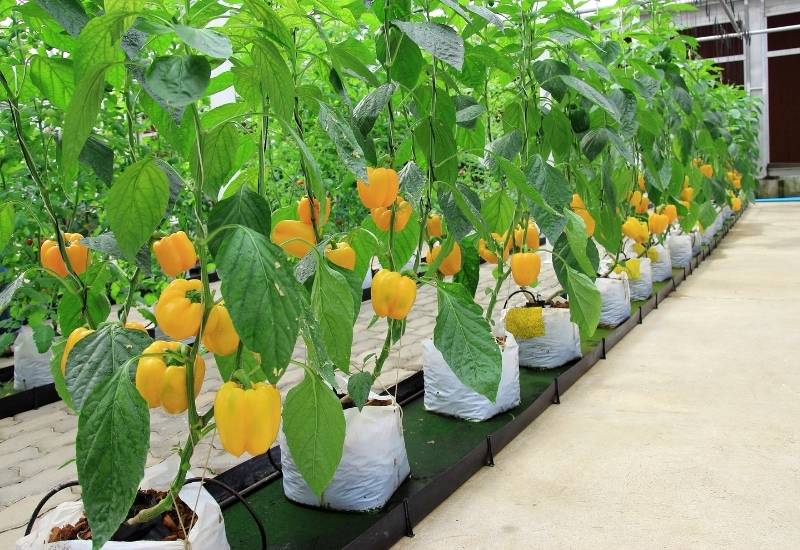
Bell peppers are hard to grow outdoors in most temperate regions. Of all the summer vegetables, they are the ones that really need the strongest sunlight and heat. Getting them to ripen in temperate regions like most of the US or Canada is almost impossible.
But indoors you can reproduce optimal weather conditions even for peppers. The temperature is usually higher and, above all, you can use grow lights to reproduce summer days for them.
They are fairly small plants too, which is good for smaller spaces and smaller hydroponic systems. In Nature they are actually perennials, but most people grow them as annuals, also hydroponically.
4: Radishes
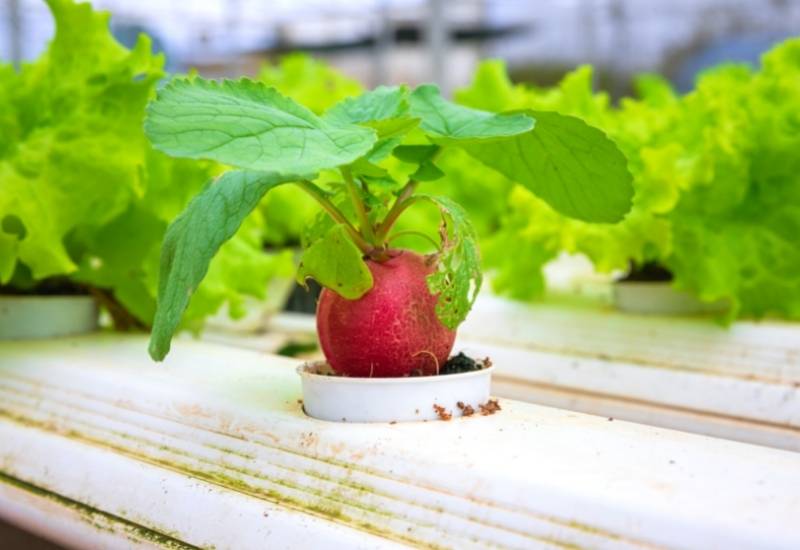
It is ironic that root vegetables like radishes actually grow very well hydroponically. It sounds counter intuitive, but it’s true. Radishes grow very well where the soil is loose.
This allows them to fatten the root a lot. In hydroponics, there is either no constraint at all to their growth, or virtually none, as the growing medium is always very loose.
They too have a very short cycle. You can actually harvest them after as little as three weeks! This means that they are excellent starter vegetables for new hydroponic gardens – and gardeners!
Their very small size makes them ideal for small hydroponics kits, lithe those compact ones you can keep on your coffee table or in your kitchen.
5: Spinach
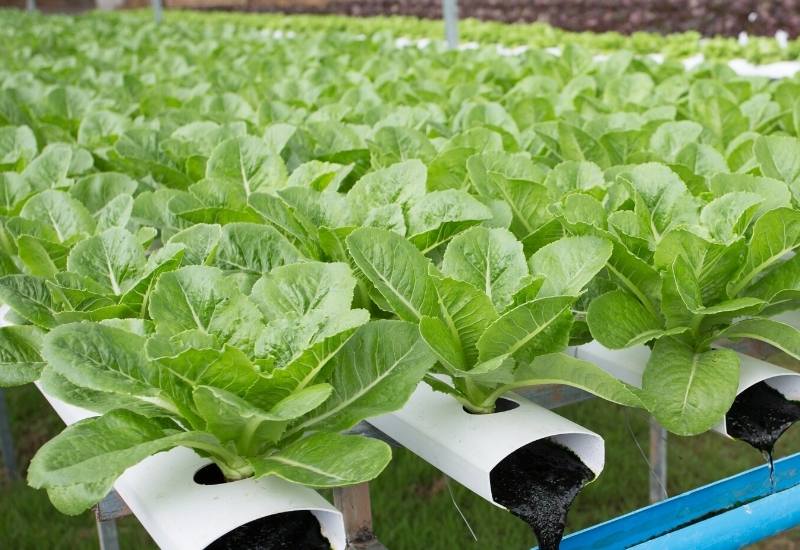
Spinach is a favorite leaf vegetable that grow perfectly well hydroponically. It is wonderful when young and fresh in salads, but you can also cook it, and in fact it is the protagonist of many dishes, as well as famous cartoons!
It is small, it has a limited root system and it is a very fast crop. In a bit more than a month, you will have your hydroponics spinach ready for the picking, usually in 5 ½ weeks!
This makes it ideal as a low maintenance, low investment and fast first or starter crop. You can still grow it later on though.
It will want more blue light than red light if you use LED grow lights, like all leafy vegetables.
6: Cucumber
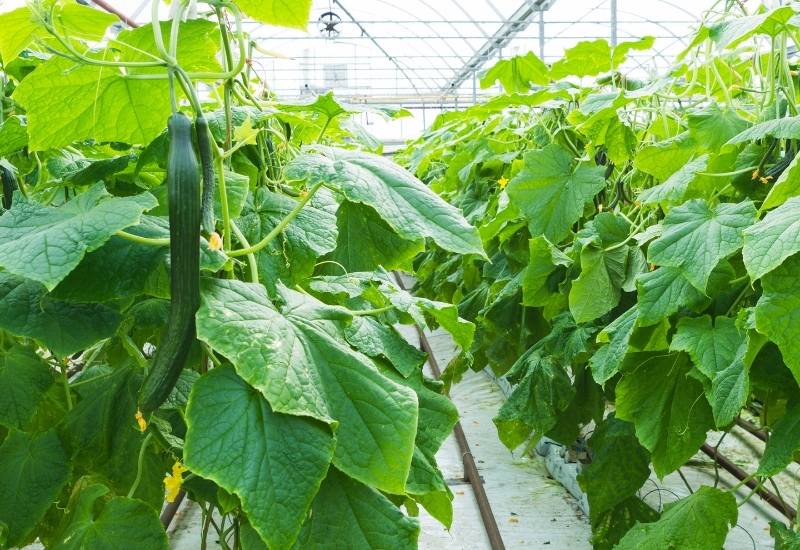
Cucumber is a “watery” fruit vegetables, so it just matches hydroponics, even intuitively. In fact this too is an excellent choice for hydroponic gardening, and you will start picking fresh and healthy cucumber about 50 days from planting them. Of course, the crop will continue for quite some time.
You do need some space though to grow cucumbers; they will need a 6 foot tall trellis, as they grow very tall hydroponically, a bit like tomatoes do. And of course this means that you will have a very abundant crop.
7: Broccoli
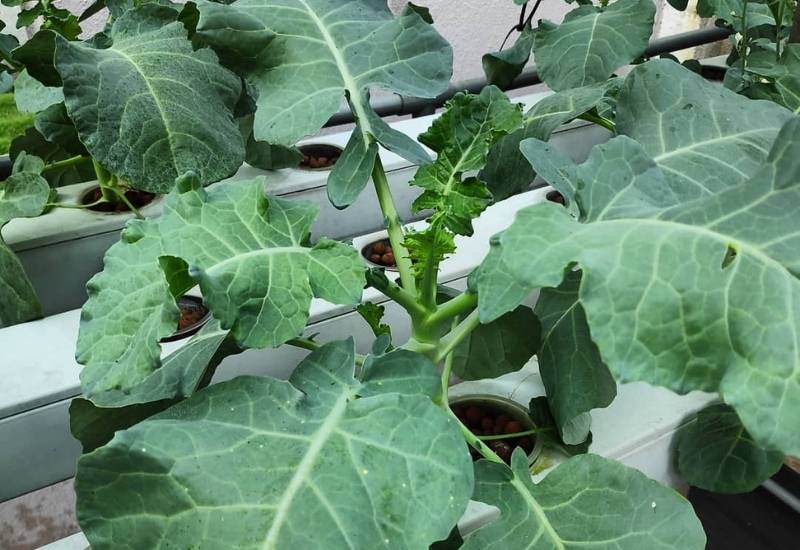
Broccoli is super healthy and it too is very good for hydroponics! It is a fairly small vegetable, but it does take some time to harvest it, it will take you about 60 days to have the first ready for the picking.
Broccoli is very susceptible to slugs and caterpillars in soil cultures, but in hydroponic cultures plants are far less attacked by pests and, unwanted “dinner guests”.
This means that in the whole, you will get better quality and better looking broccoli.
8: Peas
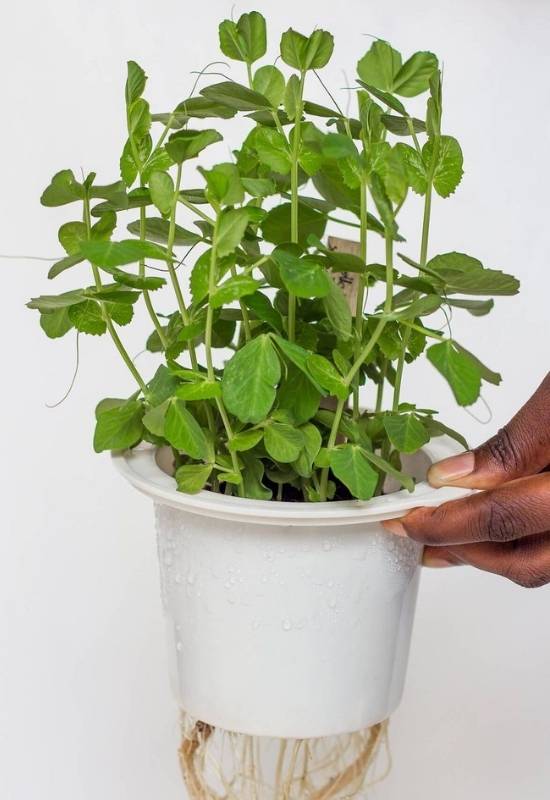
Peas are wonderfully vigorous plants that grow perfectly well hydroponically. They like fresh weather conditions, and they are really delicious when freshly picked.
Yes, this is something we have lost and forgotten in the modern, urban world. A pea just harvested, picked out of the pod has a freshness you can’t compare with frozen peas or even worse canned peas.
In fact, you can eat it raw! And if you too want the chance of rediscovering this wonderful pleasure, hydroponics a great option.
Peas, need very tall trellises too, about 6 feet, because they will grow fast, green and tall. And they will also fill with wonderful flowers too!
9: Onion
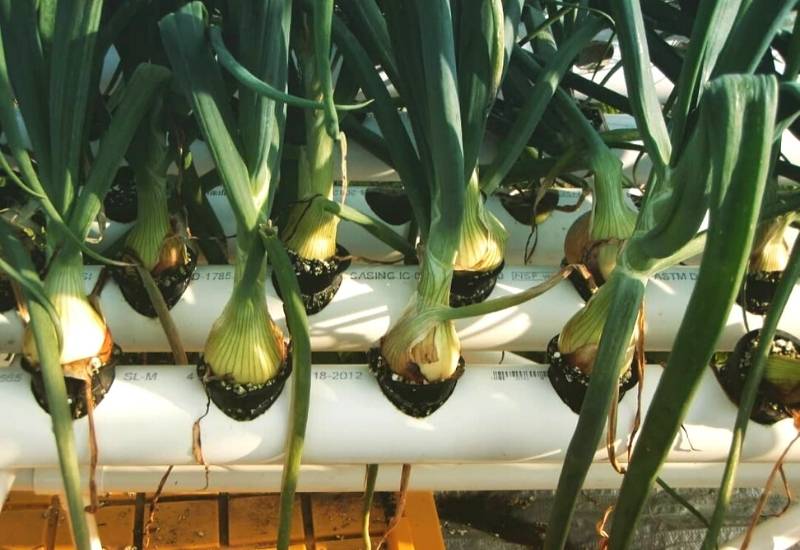
How can you grow onions hydroponically? Won’t they rot away? No! The trick is to keep the bulb just above the maximum nutrient solution level. That’s about it! It’s very simple, especially with a drip system or an aeroponic mist chamber.
Onions grow slowly, but they take up little space. This makes them idea for small kits as well. Also, they have a pest control role (with garlic) in organic and hydroponic farming.
So my advice would be to have a few in your hydroponic garden at all times. Apart from the crop, you will also have an unexpected and loyal friend with little troublemakers…
10: Carrots
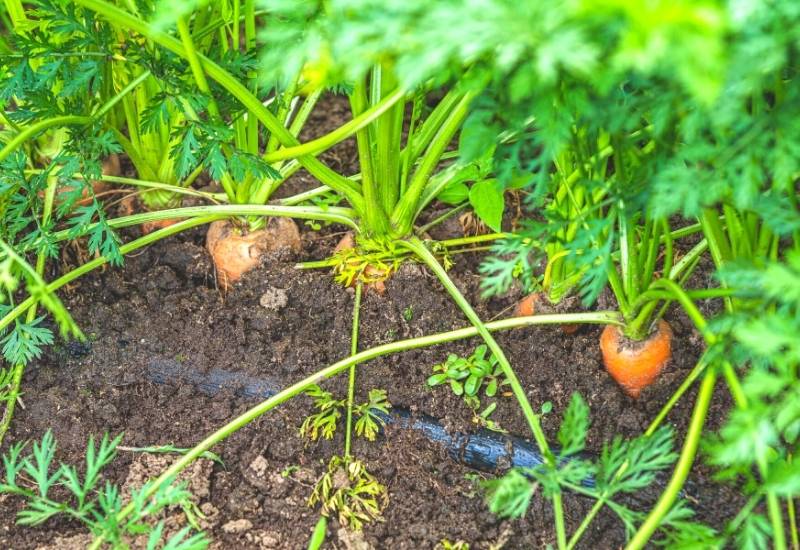
With carrots added to the list of hydroponic vegetables, you can see that basically all the most common ones are good for this green, innovative and fast growing gardening technique.
Carrots top are root vegetables, like radishes and they are fast crops too. This makes them good as starter vegetables.
Now, they will take up little space horizontally, but hydroponic carrots can be gigantic! It depends on the variety, but they will not have soil to push aside, and they will grow to their full potential.
Use deep grow tanks, at least 18 inches (45 cm), but preferably more. The largest hydroponic carrots can be more than 2 feet long!
Best Herbs For Hydroponics
You can grow lots of herbs using hydroponics. In fact, it is becoming very popular ti have a small hydroponic kit in the kitchen, so that you can pick fresh herbs every single day.
Some, like basil and chives, are tried and tested hydroponic herbs. Others are less popular, like rosemary or, even more, laurel. The reason is mainly that these plants are big, not that they do not take to the concept of hydroponics.
Thanks to the Dutch bucket system though, nowadays it is also possible to grow large plants (of herbs) too.
But I will assume that most of us do not have a huge garden where you can grow plants of all sizes.
Hydroponics especially is becoming very popular in small urban spaces. So I have chosen the nest herbs accordingly.
And for your hydroponic herb garden, here is a selection of the best herbs you can grow!
1: Basil

Basil and hydroponics are a match made in heaven. This herb, which is so typical and essential in Mediterranean dishes, likes heat but also constant humidity. You can buy it, true, but let me tell you a secret.
As soon as you pick it, it will start losing its amazing aroma and flavor. This is why basil must be freshly picked. And this is why it must be the most common “kitchen grown” herb all over the world!
It is small, with a limited root system and you will start harvesting as early as 28 days from planting. For this reason, it is ideal for even very small and rudimental hydroponic kits.
2: Chives
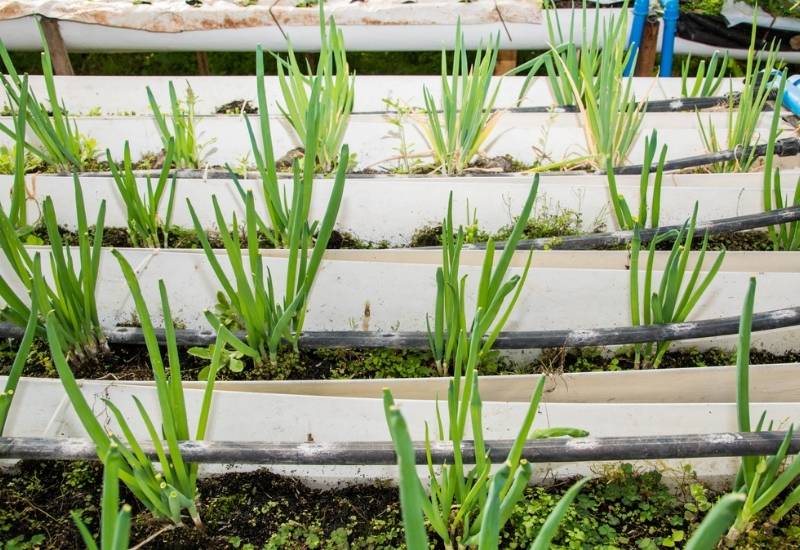
Chives are perfect for a small hydroponic garden. They only grow a few inches tall, and each plant is really minute. They are also a very fast crop.
In fact, you can start harvesting just 2 weeks from planting! This makes it ideal as a starter hydroponic herb.
Chives can literally grow in a tray with a bit of cotton wool and water; it is as simple as that to have a little crop to cut every day and use fresh in your dishes.
So, if you really want an easy to grow, playful, flavor rich herb to start with, the easiest option is chives.
3: Mint
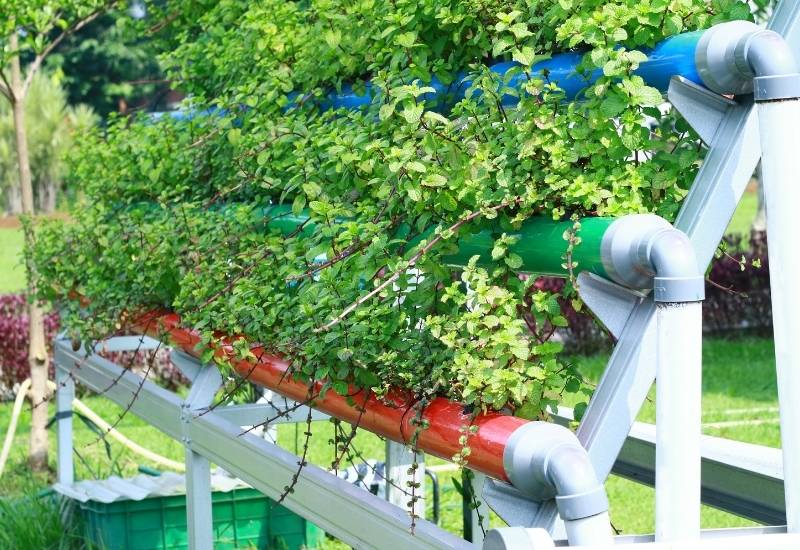
Mint is yet another herb you want to have fresh, and this is what you can get with a small hydroponic system by your kitchen window.
Mint has a very strong, pungent flavor and aroma. It has great medicinal properties: for example, it prevents nausea, it helps digestion and it releases trapped wind. But it also keeps mosquitoes and other annoying insects at bay!
Another small and fast growing herb, mint is a very strong little plant that needs very low maintenance and gives a lot. You can have an ongoing source of this fantastic herb using virtually any hydroponic system.
4: Parsley
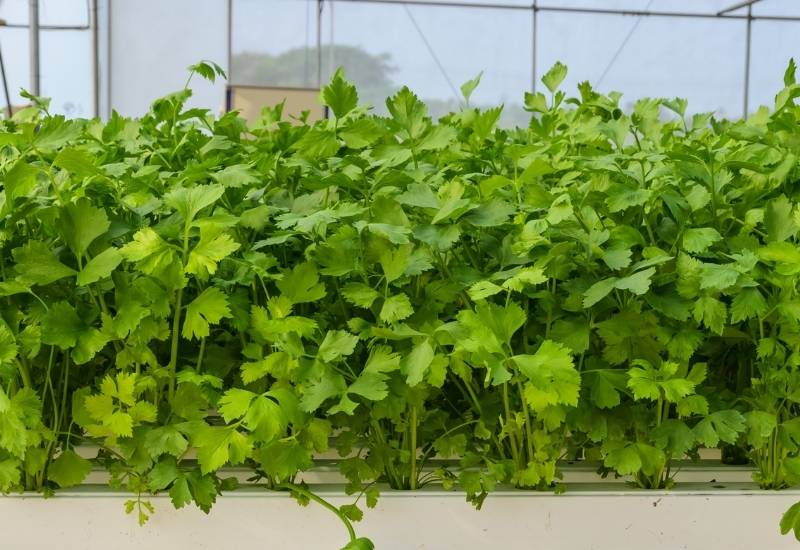
They say that there is no cooking without parsley and onions, and hydroponics can give you both. Parsley can be stored with better success than basil, but still there is a huge difference between fresh parsley and dry or frozen parsley.
It is a small fast crop, which you can start picking within 6 weeks of planting. But it will also last you for a long time, even months.
You only need to cut it to about ½ inch from the base with a good blade (scissors are perfect) and it will keep growing back!
5: Watercress
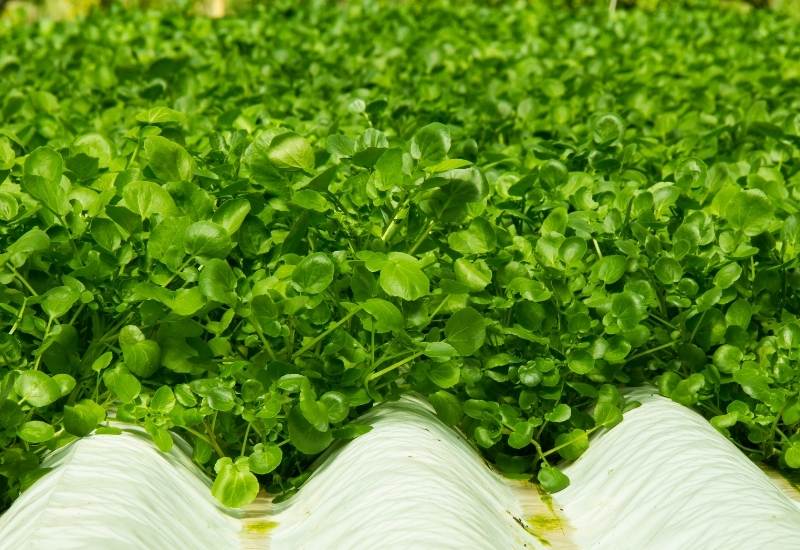
How could watercress not grow well with hydroponics? This very strong herb is in fact ideal to grow with its roots in water (or in our nutrient solution).
It is another small plant, half herb and maybe half leafy vegetable, at least in the way it is used.
You can literally ignore it for about 3 weeks after planting, then start looking for the first ready leaves to taste.
You can have a much long harvest season for watercress with hydroponics. In fact, ideally you can start in the fall and continue all the way through spring!
6: Lemon Balm
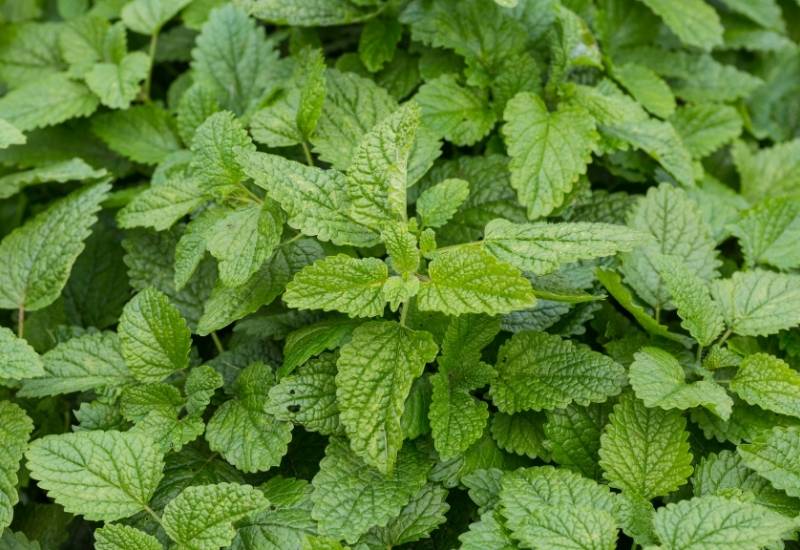
Lemon balm is a super fresh herb, medicinal and lemony in flavor and aroma. It is related to mint and even thyme, but it’s not as easily available on the market.
If you want this delicate and fresh herb but you don’t want to go looking for it in stores, your best chance is to grow it hydroponically. And in fact it’s a goo choice indeed!
This strong but fairly small herb too will be ready for the pick in a matter of weeks usually four. The unwritten rule is to start harvesting as soon as the lower leaves begin yellowing, And then it will simply grow new leaves all the time.
Best Fruit Plants To Grow In A Hydroponic System
Fruit plants top can be grown hydroponically! I mean big plants, like apples, pears and peaches. But you will understand that to grow these big trees, you will need a lot of space.
Well, if you are a lucky one, big fruit trees really need a Dutch bucket system. No other hydroponic system is really suitable for them.
However, again keeping in mind that most of us will only have a small urban or suburban garden… Good news!
There are many smaller fruit plants that you can grow even in modest hydroponic gardens! And here they are…
1: Strawberries
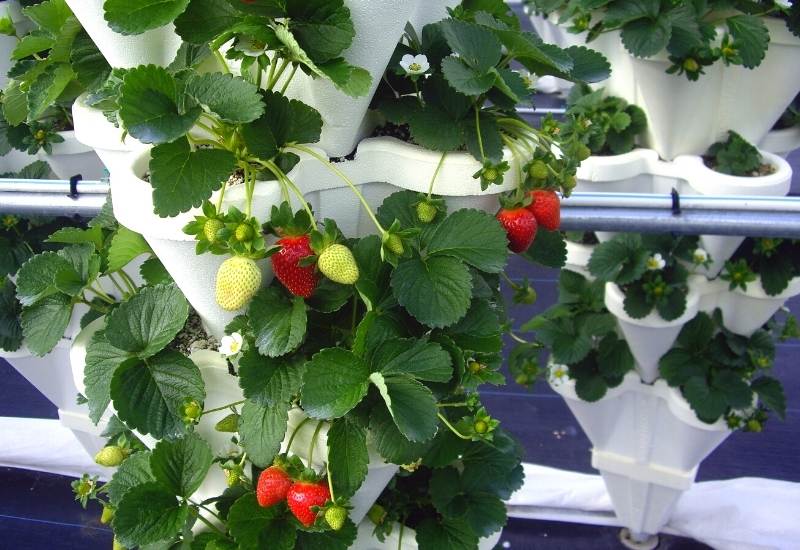
Of course little strawberry plants are very common in hydroponic gardens. You can see them growing in pipes on walls, making the most of small spaces.
In fact, hydroponic gardens are really good for strawberries, as the juicy red and heart shaped fruits do not risk rotting when touching the ground.
Note that strawberries are perennials, and you will need to clean your garden or kit regularly. But it is easy to remove them for a short while and wash pipes and tanks. Do it during the cold months, when the little plants are dormant and the dehydration rate slower.
2: Pineapple
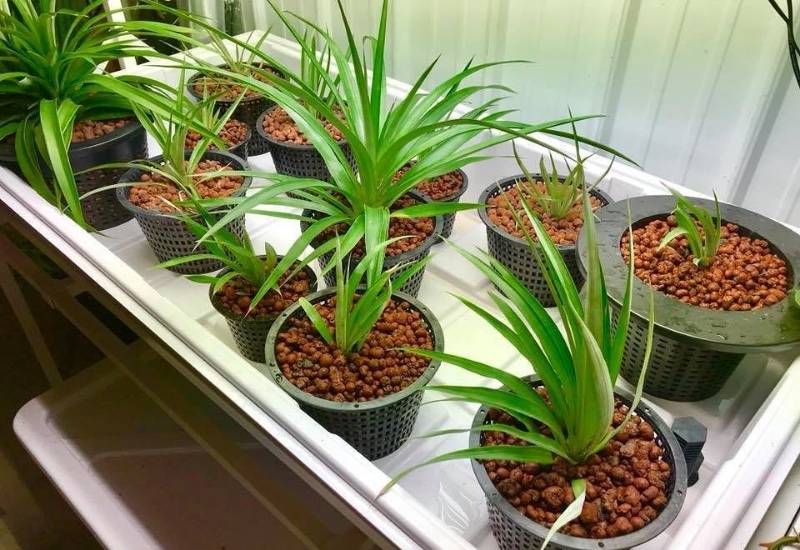
Add some exotic and juicy fruit to your hydroponic garden by growing pineapples! These striking and beautiful tropical plants with their extraordinarily refreshing fruits are ideal for even small hydroponic gardens. They are in fact fairly small but also strong and low maintenance.
You can even grow a pineapple from the fruit you eat. The trick is to twist the leaves till they come off the fruit with a core, before cutting it.
Then, allow the surface of the core to dry up before planting it, even in a hydroponic garden.
3: Red Currant and Black Currant
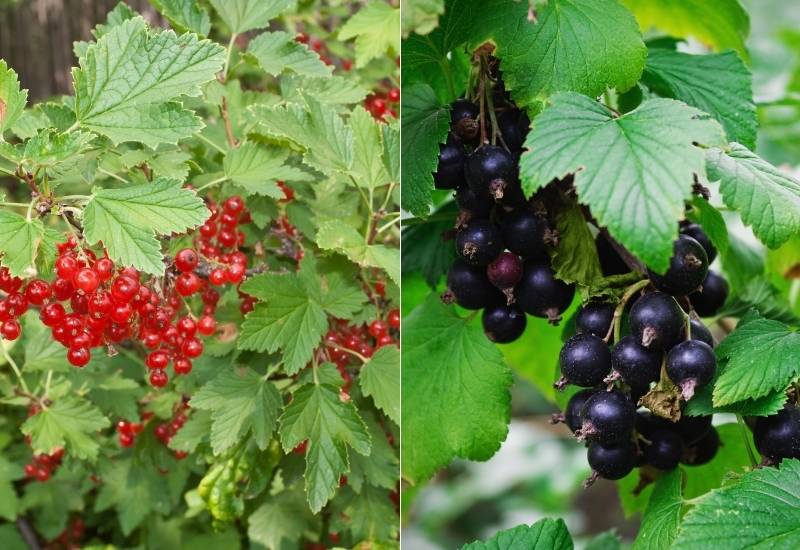
Red currant and black currant are super rich in vitamins and they grow well in hydroponic systems. They form fairly small, and in any case manageable shrubs.
So, you can easily grow them indoors, in urban and suburban gardens or small greenhouses.
They will last you for years, giving you lots of juicy berries again and again. Also, they need exactly the same hydroponic conditions. This means that you can grow both species in the same grow tank.
4: Banana
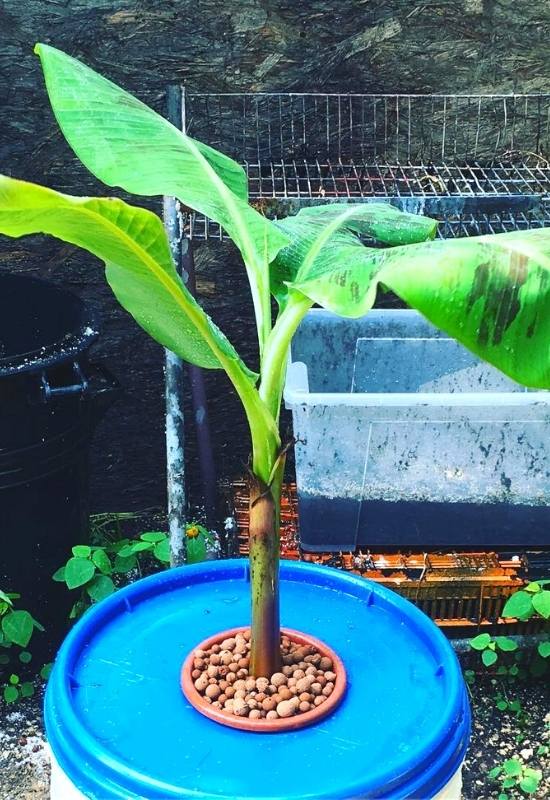
Yes, you can grow bananas hydroponically! I wanted to close this list with a surprising plant… We associate banana plants (they are not trees) to semi deserts, but they grow very well in nutrient solutions too.
Fair enough, banana plants are fairly small, so you won’t grow them in a tiny kitchen kit. But they are beautiful and small enough to grow even in a modest back garden or on a terrace.
In warm temperate areas they will even fruit outdoors, but for most of us in the USA, Canada or Central and Northern Europe, they will want a greenhouse.
Still, having your own home grown bananas can amaze all your guests!
Hydroponic Crops: A Surprising Variety
I know, most people, when they think hydroponics imagine lettuce and maybe some common, small and leafy vegetables.
Few people know that you can grow perennials, shrubs, big trailing plants like beans and peas, herbs, even Mediterranean ones and, if you have enough space, even bananas and fruit trees!
Well, now you have a list of the best to grow: most are suitable to even inexperienced hydroponic gardeners, some will fit in a very tiny grow tank, some may require a bit more commitment (like bananas), but they are all excellent for your hydroponic garden!

Written By
Adriano Bulla
After many years as an academic in London, Adriano Bulla became a writer, publishing books like A History of Gardening, Organic Gardening and Elements of Garden Design; he then decided to become a gardener, following his childhood dream, and has been following his dream writing and gardening professionally in Southern Europe, where he has specialized in new and innovative organic gardening fields and techniques, like permaculture, regenerative agriculture, food forests and hydroponics.

Wow! I really enjoyed your blog. I’m from Namibia and trying to grow plants hydroponically in a greenhouse. I always learn a lot when I come on here. I would like to see more a variety. Is there vegetables you cannot grow hydroponically?
Please let us know more about the nutrients solutions, what n how to mix the nutrients in water. Is only npk fertizer or any other sources can work? I love your write up it teaches me new ideas each time I read tru. More grace.